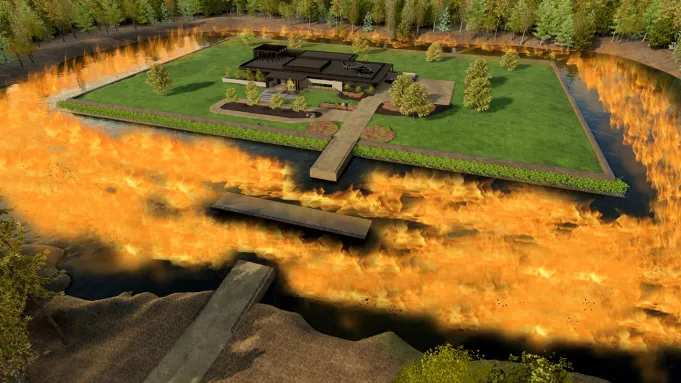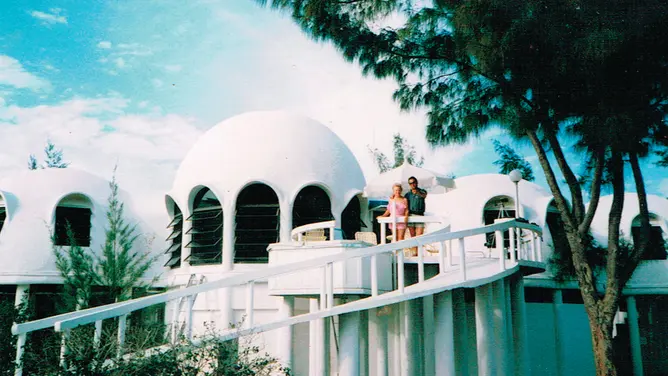In a world where unpredictable natural disasters, extreme weather events, and even the remote possibility of conflict push us to plan for worst-case scenarios, having a secure, long-lasting bunker is an investment in safety and peace of mind. But what does it take to build the strongest bunker ever built? This comprehensive guide explores the essential principles, materials, and technologies necessary to construct a bunker that can withstand blasts, earthquakes, floods, and the test of time.
1. Define Your Purpose and Requirements
Before breaking ground, start by establishing the primary purpose of your bunker. Are you building a nuclear fallout shelter, a storm-proof safe room, or a general survival haven? The intended use will determine many aspects of the design, including size, location, and structural requirements. Consider the following:
-
Occupancy: Decide how many people and how much storage (food, water, medical supplies) the bunker needs to accommodate.
-
Duration: Are you designing for short-term emergencies or long-term self-sufficiency? This will affect ventilation, waste management, and energy supply systems.
-
Threat Levels: Evaluate the potential risks in your area—nuclear blast, chemical attack, severe storms, or earthquakes. This risk assessment will influence the bunker’s depth, wall thickness, and overall reinforcement.
2. Choosing the Right Location
Location is paramount when building a bunker. The ideal site should have stable geology and be away from fault lines, floodplains, or potential targets of attack. Consider the following:
-
Depth and Natural Barriers: A deeper bunker offers enhanced protection. Many of the world’s strongest bunkers are built several stories below ground level, taking advantage of natural soil and rock for additional support.
-
Accessibility: While isolation is key for safety, ensure that the bunker remains accessible for emergency use. Proximity to utilities, roads, and communication lines is essential.
-
Discreetness: Choose a location that blends into the environment. Camouflaging your bunker not only adds an extra layer of security but may also reduce the risk of vandalism or detection.
3. Structural Design and Materials
The backbone of any bunker is its structure. To achieve superior strength and durability, use a combination of proven engineering principles and high-performance materials.
Reinforced Concrete
Reinforced concrete is the material of choice for bunkers. It offers exceptional compressive strength and can be engineered to absorb and dissipate shock waves from blasts or seismic activity. When designing your bunker:
-
Thickness and Reinforcement: Use walls and ceilings that are at least 3–4 feet thick, with a high grade of cement (such as Type I/II) and heavy steel rebar reinforcement in a grid pattern to prevent cracking.
-
Pre-stressed Concrete: Consider using pre-stressed or post-tensioned concrete, which allows for greater load distribution and resistance to tensile forces.
-
Quality Aggregates: Ensure that the aggregates (sand, gravel) are clean and free of impurities, as any weakness in the mix can compromise the structure.
Steel and Composite Materials
For added resilience, incorporate steel elements or composite panels into your design. Steel beams and plates can reinforce critical structural points, such as door frames, entryways, and support columns. Modern composites—such as fiber-reinforced polymers—offer high strength-to-weight ratios and can be used to line interiors or even form part of the bunker’s outer shell.
Blast and Shock Absorption
To minimize the effects of a nearby explosion, incorporate energy-absorbing features in the design:
-
Blast Walls: Build additional reinforced concrete or steel blast walls around the main structure to deflect shock waves.
-
Shock Absorbers: Integrate shock-absorbing pads or systems into doorways and windows to reduce impact.
-
Curved Surfaces: Consider designing walls with slight curvature rather than flat surfaces. Curved surfaces help deflect energy and reduce the force transmitted to the interior.
4. Environmental Controls and Life Support
A bunker is only as functional as its ability to support life. Future-proof your design by integrating advanced life support and environmental control systems.
Air Filtration and Ventilation
A robust ventilation system is crucial for maintaining breathable air, especially in a sealed environment:
-
HEPA and NBC Filters: Use high-efficiency particulate air (HEPA) filters combined with NBC (nuclear, biological, chemical) filtration systems to scrub out contaminants.
-
Independent Air Supply: Ensure your system can operate independently of external power, with backup generators or manual override systems.
-
Air Exchange: Design a network of ducts that ensures constant air exchange, minimizing humidity and preventing mold growth.
Water and Waste Management
Plan for an independent water supply and effective waste management:
-
Water Storage and Purification: Include large storage tanks and water purification systems (such as reverse osmosis or UV treatment) to ensure clean water for extended periods.
-
Septic or Composting Toilets: Choose systems that minimize water usage while safely processing waste. Modern composting toilets can be efficient and eco-friendly.
-
Rainwater Harvesting: If possible, design the bunker to capture and store rainwater for supplementary use.
Energy and Communication
For long-term survival, the bunker must be energy-independent:
-
Solar Panels and Backup Generators: Use a hybrid energy system that incorporates solar panels, battery storage, and backup generators to ensure uninterrupted power.
-
Low-Energy Lighting and Appliances: Prioritize energy-efficient LED lighting and appliances designed to run on minimal power.
-
Communication Systems: Incorporate satellite phones and radio communication systems that work even if traditional networks fail.
5. Security and Access
Ensuring that your bunker remains secure from intruders and environmental hazards is critical:
-
Blast-Resistant Doors: Install heavy-duty, blast-resistant doors with multiple locking mechanisms. Consider biometric access for added security.
-
Camouflaged Entrances: Design entryways that blend into the surrounding landscape. Hidden or underground entrances enhance security.
-
Surveillance Systems: Use internal and external cameras, motion detectors, and alarm systems to monitor activity and alert you to any breaches.
-
Emergency Exits: While security is paramount, always plan for safe, secondary exits in case the primary entry is blocked.
6. Aesthetic and Practical Considerations
While the primary focus is on strength and survivability, a bunker should also be livable:
-
Interior Design: Even a bunker can be designed with comfort in mind. Use modular furniture and flexible layouts that can be reconfigured as needed.
-
Soundproofing: Integrate soundproofing materials to create a quiet, contemplative space away from the chaos of the outside world.
-
Modular Zones: Divide the bunker into distinct zones for sleeping, cooking, living, and storage. This organization not only enhances functionality but also helps reduce stress in emergencies.
7. Maintenance and Future-Proofing
Building the strongest bunker is not a one-time project—it requires ongoing maintenance and updates:
-
Regular Inspections: Schedule annual inspections of the structural integrity, filtration systems, and energy backups to ensure everything remains in working order.
-
Upgradable Systems: Design with future upgrades in mind. Use modular components for critical systems so they can be easily replaced as technology advances.
-
Documentation and Training: Keep detailed records of your bunker’s design, systems, and maintenance schedules. Ensure that all residents know how to operate essential systems in emergencies.
Conclusion
Building the strongest bunker ever built requires a blend of advanced engineering, high-quality materials, and thoughtful design. From choosing the ideal location and creating a robust reinforced concrete structure to integrating high-tech life support systems and security features, every detail matters. The goal is to create a self-sufficient, durable sanctuary that not only protects against extreme threats but also provides a livable, comfortable environment in times of crisis.
By planning meticulously, using cutting-edge materials, and ensuring that every system—from air filtration to energy backup—is designed for resilience, you can build a bunker that stands as a fortress against the uncertainties of the future. Whether your focus is on surviving a nuclear event, enduring a natural disaster, or simply having a secure retreat, this guide offers a blueprint for constructing a bunker that is as formidable as it is practical.
Embrace innovation, invest in quality construction, and remember that safety and comfort go hand in hand. The strongest bunker is not just built on concrete and steel—it’s built on a foundation of foresight, planning, and an unwavering commitment to protecting what matters most.




